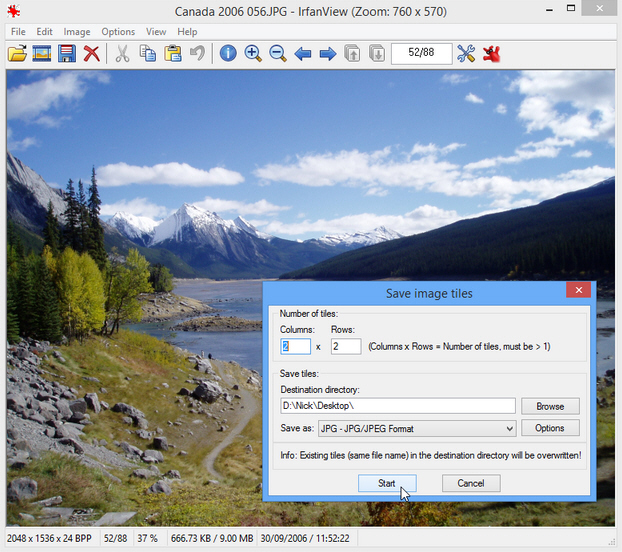IrfanView adds new features, widens support to legacy image formats

Irfan Skiljan has unveiled IrfanView 4.38, a major new build of his popular Windows image viewer and editor that’s free for personal use.
Despite the minor revision number, IrfanView 4.38 is packed with a significant number of new features, as well as newly added support (via a plugin) for legacy image formats stretching back to the days of 8-bit computing.
IrfanView 4.38 opens with two significant additions to its Options menu. The first is Export image tiles (split files), which allows users to split a single image into multiple files based on user-defined rows and columns.
The second option -- Hotfolder (watch folder) -- makes it possible for users to select a folder and get IrfanView to automatically show new images as they’re added to the folder.
Three is the magic number as far as the Thumbnails window and Print dialog are both concerned. Thumbnails gain new Tiles, Details and List modes, while the Print dialog adds borderless print, negative positions and the ability to always use the default printer. In addition, the dialog comes with the promise of an improved print preview.
Additional functionality has also been added through third-party plugins: users can now open and edit images created on legacy 8-bit and 16-bit machines, including ZX Spectrum, Atari ST and Commodore 64, thanks to added support for RECOIL in the Formats plug-in.
Meanwhile a new IrfanView Shell Extension plug-in, available through the IrfanView website, adds some IrfanView commands to the Windows Explorer context menu. This allows users to select multiple images and quickly play a slideshow, load files in the Thumbnail window, start JPG lossless rotation or convert images to another format.
A new flag -- /makecopy -- has been added to the /convert command-line function, which allows IrfanView to automatically make copies of a file if the destination file exists rather than prompting to overwrite.
A new keyboard shortcut -- [Ctrl] + [Shift] + [N] -- allows users to quickly create a negative image across all channels, while users can now open the current file in another program by holding the [Shift] key and left mouse button while dragging the image across into the target program window.
Other changes include new options in the Adobe 8BF filters dialog, improved speed when using the LCMS (Color Management) Plugin and an option -- which needs to be manually added to the Picasa.ini file -- that allows users to add up to 10 external editors for quickly opening files in other apps.
Support has been improved for high-DPI screens, and users are recommended to update all plugins to the latest version separately via the IrfanView website.
IrfanView 4.38 is available now as a free-for-personal-use download for PCs running Windows 95 or later.
